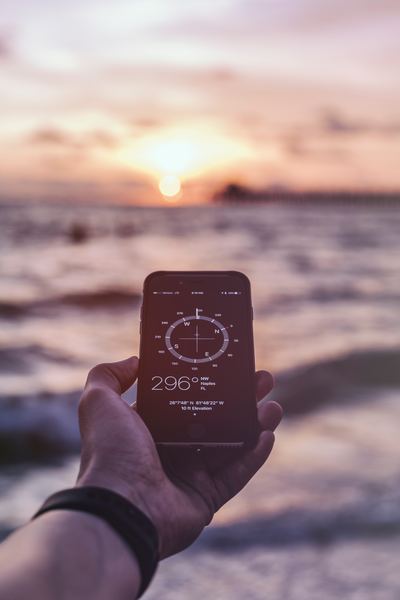PYBOSSA was born as an open source framework for building citizen science projects.
Since the beginning, we aimed to create a framework flexible enough that could be used anywhere: physics, math, chemistry…, However, the big jump came when the British Museum hired us to build their crowdsourcing platform.
At this moment, we realized that PYBOSSA was meant to be the most flexible citizen science (or crowdsourcing) framework in the world.
Flexibility in its design
There are plenty of frameworks for building citizen science projects: Zooniverse, Hive, Amazon Mechanical Turk, Crowdflower just to name a few, however, PYBOSSA is pretty unique. Why?
Because PYBOSSA was created to work with any possible scenario in mind. Moreover, it was designed to be fully open: meaning open source, open data, and open science.
Openness at its core
PYBOSSA is unique because you can download data from any project without having to create an account in the platform. That means real open access.
You don´t have to ask permission, it´s up to you download and work with any dataset and review the data or if you prefer, build something new with it. As an example go to our Crowdcrafting site and download any data from any of the thousand projects that are published in it.
PYBOSSA is also open source, but not only the framework: it´s ecosystem.
PYBOSSA comes with its data analysis library (built on top of Python Pandas), its real-time notifications (webhooks), and its front-end.
PYBOSSA is a headless server, so you can build native web applications on top of it, using your favorite framework: Android, iOS, Angujar, VueJS,… As you can see, flexible is our first name.
Built for enterprises
PYBOSSA has tens of integrations with third-party services, allowing you to import data directly from Twitter, Flickr, Google Spreadsheets, local CSV files, Youtube, etc.
It has two-step authentication, LDAP integration for corporate environments where you don’t want to re-create all your user accounts.
Moreover, you can directly integrate any of your private user databases into PYBOSSA without having to register your users as you can use an external user ID to identify them. In other words, you can use your credentials to handle your PYBOSSA tasks, helpful, right?
Moreover, as you can install it in your servers, you have full control of your data. Yes, do not worry about someone not respecting your NDA, you don’t need them as you control everything.
The missing piece: data collection
However, PYBOSSA was missing an important piece. It was easy to use to analyze images, transcribe documents, geolocalize films, but you couldn´t ask your volunteers to send you files. Yes, files.
Why files? Because they can become mighty in data analysis, especially when you first need to gather data and then analyze it.
For that scenario, PYBOSSA was lacking that feature: allowing users (anonymous and authenticated) to send any file: PDFs, JPGs, MP4, …
If we implemented this new feature, we could transform PYBOSSA into the most flexible crowdsourcing framework, as researchers and anyone in the world can create projects where the users would be capable of sending geolocalized pictures from their phones using only the web; or record videos (with sound) with a latitude and longitude so we could analyze them afterward.
In other words, we’ve built into PYBOSSA what other frameworks do, but now you don’t need two or three different tools, you can do it with just one.
That is the case for PYBOSSA. You can use our Epicollect integration to import the data from this app. While this works well, the issue is that you have to ask your users to install another app to capture and send you any data. With our new feature, all you have to do is allow users to send the data directly from your PYBOSSA project, improving the usability and engaging your users more because they don’t have to leave your app.
Also, as you can use the PYBOSSA core features, anonymous users can send data as well, removing any barrier to participate.
Capturing data with PYBOSSA
But how can you use it? Well, we have designed it in a way that you can use it in any possible way.
Basically, you can specify in the settings file of the server which file types are you going to allow. It could be any type that you need for your project: PDFs, JPG, PNG, GIFs, MP4, JSON, CSV…
Then, you can build projects like the following examples.
Surveys with media files
Yes, you can build your surveys, but on top of that, you can ask users to send you data like a picture of the restaurant they have just visited, or audio of the birds they have spotted.

Then, as we have real-time data analysis when your project has obtained all the data samples that it needs, it triggers the analysis and voila: your project notifies users via our web-push notifications services and publishes a tweet with the information that you just captured.
Capturing geolocalized images
Now, you can use PYBOSSA to build that previous survey but also to use the HTML5 APIs for geolocalizing the data.
For example, you can use the cameras of any phone (or desktop) to take a picture and geolocalize it using the device’s GPS.

Also, while we say images, it could be sound or video. How amazing is that?
Capturing data with IoT
While humans can use this feature, it can also be beneficial for hardware that automatically records data.

For example, trap cameras, a sensor that measures any environmental variables: pollution or radioactivity. Usually, those devices save that data into files. So, if they are connected to the web, those files could be sent directly into PYBOSSA and then use it for rendering the graphs, images, videos so users could analyze it. So this will happen in real-time.
The next steps for building your project
I hope you are now excited to know that with one tool you can rule them all. You don’t need extra tools for building your project, improving the UX and retention of your users.
If you are interested in this new feature, talk to us or go directly to our documentation. We will release soon a new project where you could test this new feature from your phone!